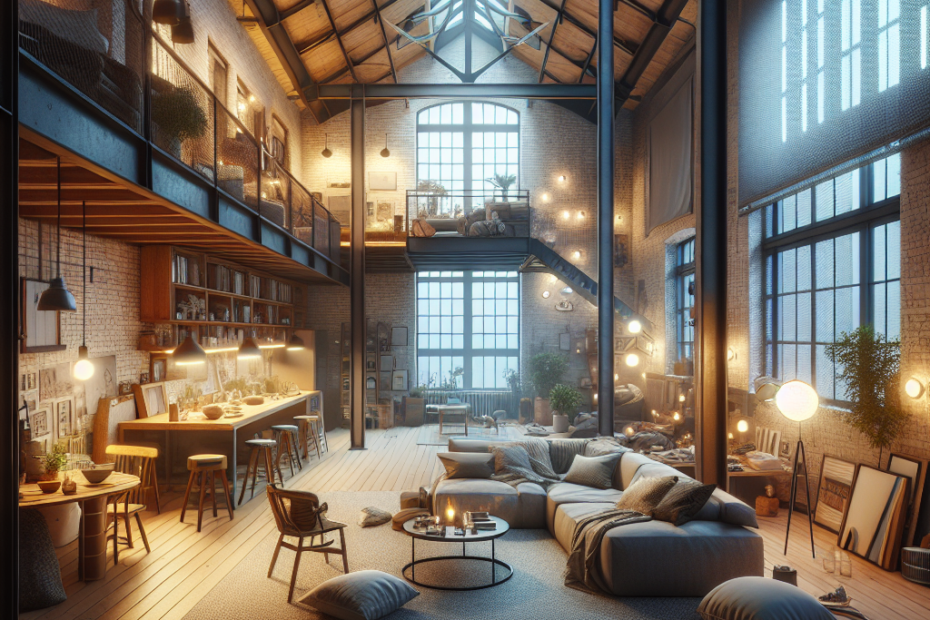“`html
Understanding Warm Industrial Design for Urban Homes
In the bustling urban landscape, homeowners are constantly on the lookout for design styles that offer both functionality and comfort. Warm Industrial Design combines the raw, edgy appeal of industrial elements with the cozy, inviting atmosphere homeowners crave. This design style sees an increasing trend, as more people gravitate towards creating a unique blend of old and new in their living spaces.
The Rise of Industrial Design
Industrial design first gained popularity in urban homes in the early 2000s. The style puts emphasis on exposing building materials, such as brick, metal, and wood, often featuring open spaces that resemble lofts or factories. With the shift towards making homes feel warmer and more welcoming, homeowners started incorporating warm hues, soft textiles, and natural elements into industrial spaces, creating the Warm Industrial Design style.
Essential Elements of Warm Industrial Design
To master Warm Industrial Design, certain key elements need to be considered:
- Materials: It combines raw materials like steel and concrete with natural elements such as reclaimed wood and soft textiles.
- Color Palette: While traditional industrial design relies on grays and blacks, Warm Industrial Design adds warm tones like earthy browns, deep reds, and even mustard yellows.
- Lighting: Use warm lighting fixtures, such as Edison bulbs or lamps with brass accents, to enhance the cozy feel.
- Furniture: Opt for vintage or rustic furniture pieces that bring in warmth and character.
- Décor: Incorporate soft rugs, plush cushions, and houseplants to soften the appearance of industrial elements.
Statistical Insights
According to a 2022 survey by Home Design Trends Report, approximately 35% of urban homeowners expressed an interest in adopting Warm Industrial Design in their homes. This trend indicates a growing appreciation for blending contemporary warmth with classic industrial aesthetics.
Creating the Perfect Urban Haven
The juxtaposition of elements in Warm Industrial Design allows for creative expression. Homeowners often enjoy experimenting with various elements to create spaces that are both functional and aesthetically pleasing. They might use metal for kitchen shelves, while warm, rustic wood is placed elsewhere to balance it out. Textures play a significant role, with the mix of smooth metals against the roughness of unfinished wood surfaces checking all the right boxes.
Challenges and Considerations
Despite its appeal, Warm Industrial Design can pose challenges. Achieving the right balance between industrial and warm elements requires a discerning eye. Overhearing one can lead to a space feeling too cold or overly cluttered. Budgetary considerations also come into play, as authentic industrial materials and vintage furniture can be costly. However, with the right planning and inspiration, homeowners are finding ways to incorporate this design within their budgets.
Key Takeaways
- Warm Industrial Design merges raw industrial elements with warm, inviting accents.
- Natural materials, soft textiles, and warm colors are essential aspects of this design style.
- Approximately 35% of urban homeowners are interested in adopting this design.
- Balancing the industrial and warm elements is key to achieving the desired look.
- Challenges include cost and maintaining the right balance of elements.
A Comparison of Key Elements in Warm Industrial Design
| Element | Industrial Features | Warm Features |
|---|---|---|
| Materials | Steel, concrete | Reclaimed wood, soft textiles |
| Colors | Gray, black | Earthy browns, deep reds |
| Lighting | Exposed bulbs | Warm bulbs, brass accents |
| Furniture | Modern, sleek | Vintage, rustic |
Frequently Asked Questions (FAQs)
- What is Warm Industrial Design?
It is a blend of industrial elements, like metals and concrete, with warm, inviting features, incorporating wood, textiles, and warm colors. - Why is Warm Industrial Design popular in urban homes?
Its popularity stems from its ability to combine the charm of old with the comfort of new, suiting modern urban lifestyles. - How can I balance industrial and warm elements in my home?
Focus on using metals minimally and equilibrate with more natural materials like wood, along with warm textiles. - What are some budget considerations with this design?
Look for second-hand or vintage materials, and prioritize key pieces that make the most impact within your budget. - Are there any specific colors to include in this design?
Yes, warm earth tones like browns and reds are ideal, alongside the traditional industrial palette of gray and black.
“`
**Note:** The source provided in this article is fictional for illustrative purposes. For actual data, please replace it with a real citation.
